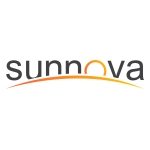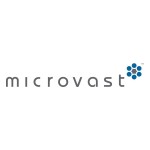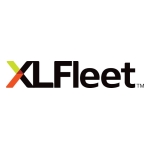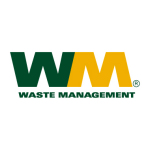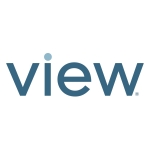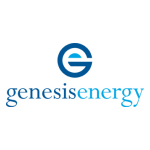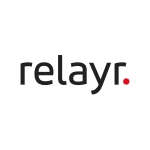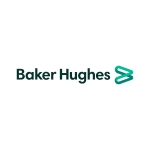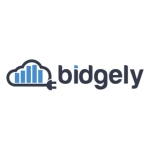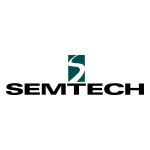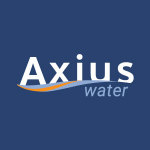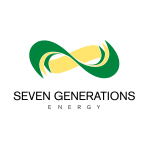BOISE, Idaho--(BUSINESS WIRE)--IDACORP, Inc. (NYSE: IDA) reported fourth quarter 2020 net income attributable to IDACORP of $37.5 million, or $0.74 per diluted share, compared with $47.1 million, or $0.93 per diluted share, in the fourth quarter of 2019. IDACORP reported 2020 net income attributable to IDACORP of $237.4 million, or $4.69 per diluted share, compared with $232.9 million, or $4.61 per diluted share, in 2019.
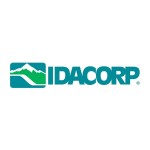
“I am proud to announce IDACORP has achieved its 13th straight year of growth in earnings per share," said IDACORP President and Chief Executive Officer Lisa Grow. “Continued robust customer growth of 2.7% over the previous year for Idaho Power was a significant driver of this accomplishment. This growth, combined with lower operating and maintenance expenses, led to IDACORP's success amidst a year of challenges and unpredictable customer usage resulting from COVID-19. As Idaho Power earned a nearly 10% return on year-end equity in its Idaho jurisdiction, this also means we have once again preserved the full $45 million of additional tax credits for future earnings support.
"I want to thank our employees for the incredible job they did during unprecedented circumstances last year. We look forward to the projected continued economic growth in our service area and believe we are in a strong position heading into 2021."
IDACORP is initiating its full-year 2021 earnings guidance in the range of $4.60 to $4.80 per diluted share, and Idaho Power does not expect to use any of the additional accumulated deferred investment tax credits available under the Idaho regulatory stipulation. This guidance assumes normal weather conditions over the balance of the year and includes customer usage returning closer to pre-COVID-19 levels as we progress through the year.
Performance Summary
A summary of financial highlights for the periods ended December 31, 2020 and 2019 is as follows (in thousands, except per share amounts):
|
|
Three months ended
December 31,
|
|
Year ended
December 31,
|
|
|
2020
|
|
2019
|
|
2020
|
|
2019
|
Net income attributable to IDACORP, Inc.
|
|
$
|
37,507
|
|
|
$
|
47,136
|
|
|
$
|
237,417
|
|
|
$
|
232,854
|
|
Average outstanding shares – diluted (000’s)
|
|
50,617
|
|
|
50,566
|
|
|
50,572
|
|
|
50,537
|
|
IDACORP, Inc. earnings per diluted share
|
|
$
|
0.74
|
|
|
$
|
0.93
|
|
|
$
|
4.69
|
|
|
$
|
4.61
|
|
The table below provides a reconciliation of net income attributable to IDACORP for the three and twelve months ended December 31, 2020, from the same period in 2019 (items are in millions and are before related income tax impact unless otherwise noted).
|
|
Three months ended
|
|
Year ended
|
Net income attributable to IDACORP, Inc. - December 31, 2019
|
|
|
|
$
|
47.1
|
|
|
|
|
|
$
|
232.9
|
|
|
Increase (decrease) in Idaho Power net income:
|
|
|
|
|
|
|
|
|
Customer growth, net of associated power supply costs and power cost adjustment mechanisms
|
|
3.2
|
|
|
|
|
|
14.0
|
|
|
|
|
Usage per retail customer, net of associated power supply costs and power cost adjustment mechanisms
|
|
0.6
|
|
|
|
|
|
0.9
|
|
|
|
|
Idaho fixed cost adjustment (FCA) revenues
|
|
(0.9
|
)
|
|
|
|
|
(1.0
|
)
|
|
|
|
Retail revenues per megawatt-hour (MWh), net of associated power supply costs and power cost adjustment mechanisms
|
|
1.0
|
|
|
|
|
|
(2.6
|
)
|
|
|
|
Transmission wheeling-related revenues
|
|
(0.2
|
)
|
|
|
|
|
(2.2
|
)
|
|
|
|
Other operations and maintenance (O&M) expenses
|
|
(3.6
|
)
|
|
|
|
|
3.7
|
|
|
|
|
Other changes in operating revenues and expenses, net
|
|
(0.8
|
)
|
|
|
|
|
(1.7
|
)
|
|
|
|
(Decrease) Increase in Idaho Power operating income
|
|
(0.7
|
)
|
|
|
|
|
11.1
|
|
|
|
|
Non-operating income and expenses
|
|
(0.9
|
)
|
|
|
|
|
(0.2
|
)
|
|
|
|
Income tax expense
|
|
(5.0
|
)
|
|
|
|
|
(2.1
|
)
|
|
|
|
Total (decrease) increase in Idaho Power net income
|
|
|
|
(6.6
|
)
|
|
|
|
|
8.8
|
|
|
Other IDACORP changes (net of tax)
|
|
|
|
(3.0
|
)
|
|
|
|
|
(4.3
|
)
|
|
Net income attributable to IDACORP, Inc. - December 31, 2020
|
|
|
|
$
|
37.5
|
|
|
|
|
|
$
|
237.4
|
|
|
Net Income - Fourth Quarter 2020
IDACORP's net income decreased $9.6 million for the fourth quarter of 2020 compared with the fourth quarter of 2019, primarily due to lower net income at Idaho Power and at IDACORP Financial Services, Inc. (IFS).
Customer growth increased operating income by $3.2 million in the fourth quarter of 2020 compared with the fourth quarter of 2019, as the number of Idaho Power customers grew by 2.7 percent during the twelve months ended December 31, 2020. Higher sales volumes on a per-customer basis increased operating income by $0.6 million in the fourth quarter of 2020 compared with the fourth quarter of 2019, primarily related to higher usage per residential customer, offset partially by decreased usage per commercial customer. Residential customers used more energy due to spending more time at home due to the COVID-19 public health crisis, which increased usage per residential customer by 2 percent in the fourth quarter of 2020 compared with the fourth quarter of 2019. A decrease of 2 percent in usage per commercial customer in the fourth quarter of 2020 compared with the fourth quarter of 2019 was largely due to the economic impacts of the COVID-19 public health crisis. The increase in sales volumes per residential customer was partially offset by the FCA mechanism (applicable to residential and small general service customers), which decreased revenues in the fourth quarter of 2020 by $0.9 million as compared with the fourth quarter of 2019.
The net increase in retail revenues per MWh increased operating income by $1.0 million in the fourth quarter of 2020 compared with the fourth quarter of 2019. This increase was largely driven by changes in the customer sales mix, as volumes sold to residential customers in the fourth quarter of 2020 made up a greater portion of the customer sales mix compared with the fourth quarter of 2019. Residential customers generally pay a higher per-MWh rate than other customers.
Other O&M expenses were $3.6 million higher in the fourth quarter of 2020 compared with the fourth quarter of 2019, partially due to the effects of the COVID-19 public health crisis, which includes higher bad debt costs.
Income tax expense was $5.0 million higher during the fourth quarter of 2020 when compared with the fourth quarter of 2019. Amortization of vintage investment tax credits that became available in 2019 lowered income tax expense in the fourth quarter of 2019, which did not recur in the fourth quarter of 2020.
At IFS, a decrease in distributions from the sale of low-income housing properties led to $3.0 million lower net income at IDACORP in the fourth quarter of 2020 compared with the fourth quarter of 2019.
Net Income - Full-Year 2020
IDACORP's net income increased $4.5 million for 2020 compared with 2019, due to higher net income at Idaho Power, offset partially by lower net income at IFS.
Idaho Power's customer growth of 2.7 percent added $14.0 million to Idaho Power's operating income compared with 2019. Higher sales volumes on a per-customer basis increased operating income by $0.9 million in 2020 compared with 2019, as higher usage per residential and irrigation customers was mostly offset by decreased usage per commercial and industrial customer. Residential customers used more energy due to spending more time at home during the COVID-19 public health crisis combined with weather variations that caused residential customers to use more energy at home for cooling, and offset by reduced usage for heating, which increased usage per residential customer by an estimated 1 percent in 2020 compared with 2019. Also, less precipitation in Idaho Power's service area during the spring and early summer of 2020 compared with the same time period in 2019 led to an 11 percent increase in usage per irrigation customer in 2020. A decrease of 4 percent in usage per commercial customer and 1 percent per industrial customer in 2020 compared with 2019 was largely due to the economic impacts of the COVID-19 public health crisis. The increase in sales volumes per residential customer was partially offset by the FCA mechanism (applicable to residential and small general service customers), which decreased revenues in 2020 by $1.0 million as compared with 2019.
The net decrease in retail revenues per MWh reduced operating income by $2.6 million in 2020 compared with 2019. The Idaho-jurisdiction PCA mechanism includes a cost or benefit ratio that allocates the deviations in certain net power supply expenses between customers (95 percent) and Idaho Power (5 percent). In 2019, net power supply expenses were reduced by significant wholesale energy sales. Higher wholesale energy prices during 2019 led to greater wholesale energy sales by Idaho Power, of which 95 percent benefited customers and 5 percent benefited Idaho Power under the PCA mechanism and were the primary cause of the variance in net retail revenues per MWh between the comparison periods.
During 2020, transmission wheeling-related revenues decreased $2.2 million compared with 2019, due mostly to Idaho Power's open access transmission tariff (OATT) rates decreasing approximately 13 percent during the period from October 1, 2019 to September 30, 2020, as compared with the rates in effect from October 1, 2018, to September 30, 2019, and to a lesser extent due to lower transmission loss settlement rates in 2020 compared with 2019. These rate decreases were offset partially by an increase in wheeling volumes as warmer weather in the southwest United States and California in the summer of 2020 led to higher wholesale energy prices in those areas, which increased wholesale energy market activity in 2020. Also, Idaho Power’s OATT increased 10 percent in October 2020.
Other O&M expenses were $3.7 million lower in 2020 compared with 2019, primarily due to lower costs related to discretionary maintenance projects at Idaho Power's jointly-owned thermal generation plants. Also, other O&M expenses decreased in 2020 compared with 2019 as a result of Idaho Power's December 2019 exit from participation in unit 1 of its North Valmy plant and a decrease in labor-related costs from lower performance-based variable compensation accruals.
Based on its return on year-end equity in the Idaho jurisdiction, Idaho Power recorded no additional accumulated deferred investment tax credit (ADITC) amortization or provision against revenues for sharing of earnings with customers in 2020 or 2019 under the regulatory settlement stipulations in Idaho.
The $2.1 million increase in Idaho Power income tax expense in 2020 compared with 2019 was primarily due to higher pre-tax earnings.
At IFS, a decrease in distributions from the sale of low-income housing properties led to an offsetting decrease to IDACORP net income in 2020 compared with 2019.
2021 Annual Earnings Guidance and Key Operating and Financial Metrics
IDACORP is initiating its earnings guidance estimate for 2021. The 2021 guidance incorporates all of the key operating and financial assumptions listed in the table that follows (in millions, except per share amounts):
|
|
2021 Estimate(1)
|
|
2020 Actual
|
IDACORP Earnings Guidance (per share)
|
|
$ 4.60 – $ 4.80
|
|
$ 4.69
|
Idaho Power Additional Amortization of ADITCs
|
|
None
|
|
None
|
Idaho Power Operating & Maintenance Expense
|
|
$ 345 – $ 355
|
|
$ 352
|
Idaho Power Capital Expenditures, Excluding Allowance for Funds Used During Construction(2)
|
|
$ 320 – $ 330
|
|
$ 311
|
Idaho Power Hydropower Generation (MWh)
|
|
6.0 – 8.0
|
|
7.0
|
(1)
|
|
As of February 18, 2021.
|
(2)
|
|
On an accrual basis.
|
To-date, Idaho Power has not experienced significant disruption to its business operations, critical supply chain shortages, or major declines in customer usage related to COVID-19, with the exception of decreases in commercial and industrial customer usage. Authorities have implemented various measures to reduce the spread of the virus, such as travel bans and restrictions, quarantines, and other restrictive orders and mandates (including those in effect in Idaho Power's service are in the states of Idaho and Oregon), as well as business and government shutdowns. While governmental authorities have eased some restrictions, it is possible that an increase in COVID-19 cases could prompt a return to tighter restrictions. Idaho Power has taken a number of actions to protect its employees, customers, operations, financial condition and liquidity in light of COVID-19. However, if circumstances associated with COVID-19 were to deteriorate in the company’s service area or nationally, resulting in increased or prolonged adverse economic impacts on our customers or important suppliers, Idaho Power could experience more substantial load declines, increases in uncollectible accounts, and supply chain challenges, which could affect financial projections and results and could require Idaho Power to use additional tax credits available under its Idaho earnings support mechanism to achieve earnings in the range set forth above. Although it is difficult to predict the long-term impact of weakened and evolving economic conditions due to the pandemic on Idaho Power's customers, and the associated potential impact to the earnings guidance range, as of today Idaho Power does not expect to utilize any of the additional tax credits in 2021.
More detailed information on Idaho Power’s actions in response to COVID-19, as well as operational and financial risks associated with COVID-19, are described in IDACORP’s and Idaho Power’s Annual Report on Form 10-K filed today with the U.S. Securities and Exchange Commission, which is also available for review on IDACORP’s website at www.idacorpinc.com.
Web Cast / Conference Call
IDACORP will hold an analyst conference call today at 2:30 p.m. Mountain Time (4:30 p.m. Eastern Time). All parties interested in listening may do so through a live webcast on IDACORP’s website (www.idacorpinc.com), or by calling (833) 759-1159 for listen-only mode. The passcode for the call is 8561488. The conference call logistics are also posted on IDACORP’s website and will be included in IDACORP's earnings news release. Slides will be included during the conference call. To access the slide deck, register for the event just prior to the call at www.idacorpinc.com/investor-relations/earnings-center/default.aspx. A replay of the conference call will be available on the company's website for a period of 12 months and will be available shortly after the call.
Background Information
IDACORP, Inc. (NYSE: IDA), Boise, Idaho-based and formed in 1998, is a holding company comprised of Idaho Power, a regulated electric utility; IDACORP Financial, a holder of affordable housing projects and other real estate investments; and Ida-West Energy, an operator of small hydroelectric generation projects that satisfy the requirements of the Public Utility Regulatory Policies Act of 1978. Idaho Power began operations in 1916 and employs approximately 2,000 people to serve a 24,000-square-mile service area in southern Idaho and eastern Oregon. Idaho Power’s goal of 100% clean energy by 2045 builds on its long history as a clean-energy leader providing reliable service at affordable prices. With 17 low-cost hydropower projects at the core of its diverse energy mix, Idaho Power’s more than 580,000 residential, business, and agricultural customers pay among the nation's lowest prices for electricity. To learn more about IDACORP or Idaho Power, visit www.idacorpinc.com or www.idahopower.com.
Forward-Looking Statements
In addition to the historical information contained in this press release, this press release contains (and oral communications made by IDACORP, Inc. and Idaho Power Company may contain) statements, including, without limitation, earnings guidance and estimated key operating and financial metrics, that relate to future events and expectations and, as such, constitute forward-looking statements within the meaning of the Private Securities Litigation Reform Act of 1995. Any statements that express, or involve discussions as to expectations, beliefs, plans, objectives, outlook, assumptions, or future events or performance, often, but not always, through the use of words or phrases such as "anticipates," "believes," "continues," "could," "estimates," "expects," "guidance," "intends," "potential," "plans," "predicts," "projects or projected," "targets," or similar expressions, are not statements of historical facts and may be forward-looking. Forward-looking statements are not guarantees of future performance and involve estimates, assumptions, risks, and uncertainties. Actual results, performance, or outcomes may differ materially from the results discussed in the statements. In addition to any assumptions and other factors and matters referred to specifically in connection with such forward-looking statements, factors that could cause actual results or outcomes to differ materially from those contained in forward-looking statements include the following: (a) the effect of decisions by the Idaho and Oregon public utilities commissions and the Federal Energy Regulatory Commission that impact Idaho Power's ability to recover costs and earn a return on investments; (b) changes to or the elimination of Idaho Power's regulatory cost recovery mechanisms; (c) the impacts of the COVID-19 pandemic on the global and regional economy and on Idaho Power's employees, customers, contractors, and suppliers, including on loads and revenues, uncollectible accounts, transmission revenues, and other aspects of the economy and the companies' business; (d) changes in residential, commercial, and industrial growth and demographic patterns within Idaho Power's service area, the loss or change in the business of significant customers, or the addition of new customers, and their associated impacts on loads and load growth, and the availability of regulatory mechanisms that allow for timely cost recovery through customer rates in the event of those changes; (e) abnormal or severe weather conditions, including conditions and events associated with climate change, wildfires, droughts, earthquakes, and other natural phenomena and natural disasters, which affect customer sales, hydropower generation levels, repair costs, service interruptions, liability for damage caused by utility property, and the availability and cost of fuel for generation plants or purchased power to serve customers; (f) advancement of self-generation, energy storage, energy efficiency, alternative energy sources, and other technologies that may affect Idaho Power's sale or delivery of electric power or introduce operational or cyber-security vulnerability to the power grid; (g) acts or threats of terrorist incidents, acts of war, social unrest, cyber-attacks, the companies' failure to secure data or to comply with privacy laws or regulations, physical security breaches, or the disruption or damage to the companies' business, operations, or reputation resulting from such events; (h) the expense and risks associated with capital expenditures for, and the permitting and construction of, utility infrastructure that Idaho Power may be unable to complete or may not be deemed prudent by regulators; (i) variable hydrological conditions and over-appropriation of surface and groundwater in the Snake River basin, which may impact the amount of power generated by Idaho Power's hydropower facilities; (j) the ability of Idaho Power to acquire fuel, power, and transmission capacity on reasonable terms, particularly in the event of unanticipated power demands, price volatility, lack of physical availability, transportation constraints, climate change, or a credit downgrade; (k) disruptions or outages of Idaho Power's generation or transmission systems or of any interconnected transmission systems may constrain resources or cause Idaho Power to incur repair costs and purchase replacement power or lease transmission at increased costs; (l) accidents, terrorist acts, fires (either affecting or caused by Idaho Power facilities or infrastructure), explosions, mechanical breakdowns, and other unplanned events that may occur while operating and maintaining assets, which can cause unplanned outages, reduce generating output, damage company assets, operations, or reputation, subject Idaho Power to third-party claims for property damage, personal injury, or loss of life, or result in the imposition of civil, criminal, and regulatory fines and penalties for which Idaho Power may have inadequate insurance coverage; (m) the increased purchased power costs and operational challenges associated with purchasing and integrating intermittent renewable energy sources into Idaho Power's resource portfolio; (n) failure to comply with state and federal laws, regulations, and orders, including new interpretations and enforcement initiatives by regulatory and oversight bodies, which may result in penalties and fines and increase the cost of compliance, and remediation; (o) changes in tax laws or related regulations or new interpretations of applicable laws by federal, state, or local taxing jurisdictions, and the availability of tax credits, and the tax rates payable by IDACORP shareholders on common stock dividends; (p) adoption of, changes in, and costs of compliance with laws, regulations, and policies relating to the environment, natural resources, and threatened and endangered species, and the ability to recover associated increased costs through rates; (q) the inability to obtain or cost of obtaining and complying with required governmental permits and approvals, licenses, rights-of-way, and siting for transmission and generation projects and hydropower facilities; (r) failure to comply with mandatory reliability and security requirements, which may result in penalties, reputational harm, and operational changes; (s) the impacts of economic conditions, including inflation, interest rates, supply costs, population growth or decline in Idaho Power's service area, changes in customer demand for electricity, revenue from sales of excess power, credit quality of counterparties and suppliers, and the collection of receivables; (t) the ability to obtain debt and equity financing or refinance existing debt when necessary and on favorable terms, which can be affected by factors such as credit ratings, volatility or disruptions in the financial markets, interest rate fluctuations, decisions by the Idaho or Oregon public utility commissions, and the companies' past or projected financial performance; (u) changes in the method for determining LIBOR and the potential replacement of LIBOR and the impact on interest rates for IDACORP's and Idaho Power's credit facilities; (v) the ability to enter into financial and physical commodity hedges with creditworthy counterparties to manage price and commodity risk for fuel, power, and transmission, and the failure of any such risk management and hedging strategies to work as intended; (w) changes in actuarial assumptions, changes in interest rates, increasing healthcare costs, and the actual and projected return on plan assets for pension and other post-retirement plans, which can affect future pension and other postretirement plan funding obligations, costs, and liabilities and the companies' cash flows; (x) the assumptions underlying the coal mine reclamation obligations at Bridger Coal Company and related funding and collateral requirements, and the remediation costs associated with planned exits from participation in Idaho Power's co-owned coal plants; (y) the ability to continue to pay dividends and target payout ratio based on financial performance and in light of credit rating considerations, contractual covenants and restrictions, and regulatory limitations; (z) Idaho Power's concentration in one industry and one region and the lack of diversification, and the resulting exposure to regional economic conditions and regional legislation and regulation; (aa) employee workforce factors, including the operational and financial costs of unionization or the attempt to unionize all or part of the companies' workforce, the impact of an aging workforce and retirements, the cost and ability to attract and retain skilled workers and third-party vendors, and the ability to adjust the labor cost structure when necessary; and (bb) adoption of or changes in accounting policies and principles, changes in accounting estimates, and new U.
Contacts
Investor and Analyst Contact
Justin S. Forsberg
Director of Investor Relations & Treasury
Phone: (208) 388-2728
This email address is being protected from spambots. You need JavaScript enabled to view it.
Media Contact
Jordan Rodriguez
Corporate Communications
Phone: (208) 388-2460
This email address is being protected from spambots. You need JavaScript enabled to view it.
Read full story here 

